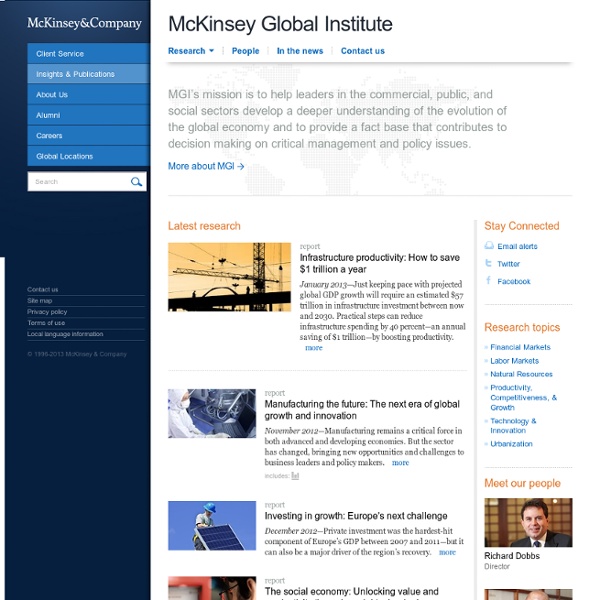



s October 2012 Trend Briefing covering the consumer trend "SERVILE BRANDS" Yes, consumers are more demanding, time-starved, informed, and choice-saturated than ever-before (we know you know). For brands to prosper, the solution is simple though: turn SERVILE. This goes far beyond offering great customer service*. SERVILE means turning your brand into a lifestyle servant focused on catering to the needs, desires and whims of your customers, wherever and whenever they are. * Everyday great ‘customer service’ will of course forever be crucial: a 2011 American Express survey found that 70% of American consumers were willing to spend more with brands that provided a great service, and a whopping 60% thought brands weren’t thinking enough about the service experience. Drivers: Three key changes among consumers are driving the need for your brand or business to go truly SERVILE: We've repeatedly flagged up the sky-rocketing number of CITYSUMERS (urban consumers). Here’s the new reality: consumers will never again revere brands the way they used to: Enough of the theory.
Domestic Trends - Google Finance Google Domestic Trends track Google search traffic across specific sectors of the economy. Changes in the search volume of a given sector on google.com may provide unique economic insight. You can access individual trend indexes by clicking on the left-hand navigation. The indexes are currently calculated only for US search traffic. Interesting Examples Google Retail Index and clothing store sales From the graph below you will see that actual clothing store sales (source) and the Google Retail index has been decreasing over time. Google Auto Buyers Index User searches related to car buying increased dramatically with the launch of the US Government's Cash for Clunkers program. We wondered if Google search volumes in a month can help better predict real world statistics well before they are officially tabulated and released. Predicting retail sales The US Census Bureau releases the Advance Monthly Retail Sales survey 1–2 weeks after the close of each month. Methodology for Predictions
Company Info | Item Pricing, Online Sales Reports | eBay Research Tools & Market Data a Who we are Terapeak is the leader in ecommerce market analytics, dedicated to helping online merchants grow their business and become more profitable. Our job is to distill and make sense of big data sets, so we can provide our customers with market insights that can be used to discover new and emerging opportunities. What we do Terapeak analyzes over 2.4 billion transactions per year and over $68 Billion in online consumer spending worldwide. Terapeak helps online merchants to understand the current and competitive landscape of their market space by providing transparency into competitor behavior, pricing techniques and strategies, supply and demand, category and product trends, and customer purchase patterns. As the first authorized analytics provider of eBay market data, and the leading aggregator of e-commerce data for eBay, Amazon, Yahoo! Founded in 2004, Terapeak is an indispensable resource for over 1.3 million online merchants. Our Culture
45 Social Media Trends and Predictions « Jeffbullas’s Blog As I was writing this article about Social Media trends I remembered a quote that I had come across a while back from Bill Gates of Microsoft… “We always overestimate the change that will occur in the next two years and underestimate the change that will occur in the next ten. Don’t let yourself be lulled into inaction.” So when you read the list keep the trends in mind and prepare for a very interesting web world by 2019. Some rather influential Social Media commentators such as Brian Solis’s rather insightful article on his Blog PR 2.0 says that ”social networks will become our Individual online Operating System“ with Twitter and Facebook and Apple amonst others are vying to be your “One” operating system for social networks. So what other Social Media trends will emerge over the next 12 months? 266inShare
Private Equity’s New Phase A silent, seismic shift has dramatically altered corporate ownership and business governance globally. From 1996 to 2015, the number of publicly traded companies in the United States alone dropped nearly 50%. Some of this ownership shift includes failure of firms or acquisition of firms into larger conglomerates (either domestic or foreign), but much of the de-listing shift comes from publicly traded firms becoming private. A major catalyst for this shift has been private equity firms, which take companies private and incorporate them into their own portfolios. Three Phases in the Evolution of Private Equity Investment In phase one (buy and sell), PE investors looked for the equivalent of a “fixer-upper house” — a dilapidated company in a good industry that could be purchased at a discount and, after the business equivalent of some fresh paint and new appliances, resold for a profit. How Phase 3 Is Changing PE Companies